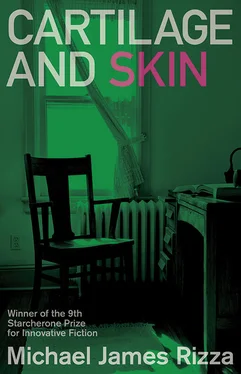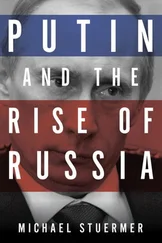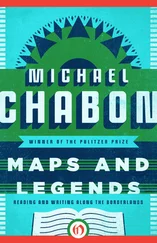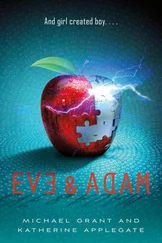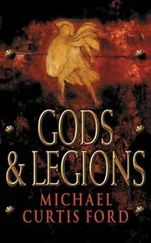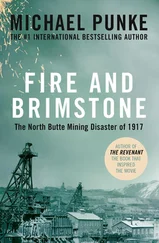Meanwhile, a tall, lanky man in a charcoal overcoat was suddenly arrested in mid-stride, in front of a large window that was fancifully frosted around its edges.
I peered through the window at a painting hanging on the wall. I was utterly stunned, for it bore the title of one my private thoughts. I needed to see the painting more clearly. When I opened the door, I heard a single muffled chime from a more distant room, and this colored my immediate impression of the place — not the sickly redolence of wood polish mixed with a lower, softer scent of potpourri; not the odd shadows cast by track lighting filtering through make-shift partitions draped in lace or else shining straight down upon a series of twisted metal objects and a pair of large disfigured human heads sculpted out of wood; not the vibrantly colored tapestries on the far wall nor the paintings and sketches on either side of me. Although the sound of the bell died instantly, it seemed to reverberate, to hang suspended in the air, mildly foreboding, as if by opening the door, I had not exactly triggered a trap but merely signaled my own presence. Now, no more than three paces into the gallery, I had to put on my social disguise and smile at whatever creature I’d awoken in the back room. I heard chair legs slide across the wooden floor. The thing was coming near, and I had yet to inspect the painting that I’d seen through the window. I was looking at it, moving toward it, when I heard behind me the rattle of beads and a male voice say, “Hello.” I glanced at him, nodded once to be polite, and hoped he would leave me alone. All the while I stood in front of the painting and stared silently, still not certain what it was supposed to be, I felt disturbed by the man. I sensed him behind me. I looked at the painting as though I were gazing at a printed page but not registering the meaning of the words. Most certainly, the man, who had parted a curtain of beads with his stubby body, was now quietly watching me, as the swaying and rattling beads began to settle. I could envision him behind me in his gray suit, his face and neck covered in a closely trimmed gray beard, his eyes seemingly magnified by his glasses. I knew he was waiting to speak again; all I had to do was make some gesture, and he would take the opportunity. I still wasn’t seeing the painting, though by now the man probably assumed that I was enraptured by it, caught in a state of mystical and static apprehension, simultaneously pulled by fear and tugged by pity.
“She’s a local artist,” the man said.
I glanced at him. He was beside a table, trying to separate coffee filters. I looked at the painting again and nodded, as if his brief explanation suddenly made the whole thing clear to me.
Despite the lace, the lighting, the beads, and the cloyed scent, the man had a robust voice, coming from deep inside his barrel body, effacing the femininity that his surroundings seemed to thrust upon him. He wasn’t so much a bull in a china shop — because a bull would have been markedly displaced — but rather some androgynous and tortured globule with no definite identity, shape, or place within the world. Perhaps I intuitively imagined this about the man because all the artwork in the gallery possessed a twisted ugliness. The community of art aficionados and the man himself probably would’ve offered some label or another, such as “abstract art,” to explain or justify this collective perversity — as if the artist were abstracting ideals or concepts out of the concrete world or else attempting to reshape the world against the normal flow of perception, traveling from subject to object as if it were possible for a person not to be defined from without, not to be born and tossed into a ready-made world, but rather to make it out of himself, without any objective, sensual reference point. Yet I didn’t buy into their delusions. I knew that the world in fact formed them; its tools were sorrow, pain, and death; and the enormity of the thing shriveled their spirits and gave them the official stamp of insignificance. Of course, I had to give the artist more credit than the man-in-the-street, who tacitly accepted a single composite image of himself. The artist, receptive and sponge-like, tried to define himself according to as many facets of the universe as he could, but the parts were so disconnected that when the artist looked inside of himself at what he’d gathered up, he saw no harmony or meaning. In depression, angst, and loneliness, he fought back, and believing that he was forcing his puny self upon the world, he made his twisted, ugly art.
The man was saying something, and I looked back and nodded assent to whatever was coming out of his mouth. I wanted him to leave, and he did, carrying an empty coffeepot through the curtain of beads, into the back room. At last, I had a moment alone with the painting near the front window, though it wasn’t the painting itself that had first attracted me, but rather its title, printed on a card beside it and affixed to the lavender window moulding: Material: Perverse, Polymorphed, and Primed , and beneath this was the artist’s name, Celeste Wilcox. I was dumbfounded. Here, in a little, goofy gallery was the exact subtitle to the third chapter of my manuscript. Either I had to believe in a remarkable, celestine coincidence and that Ms. Wilcox and I had kindred minds, or else somehow among the vast multitude of people in the city, I once again encountered the girl of my fantasies — the skinny, haggard waif who had stopped to tie her shoelaces and thus, by bending over, had severed me once and for all from my professional and social circle. When I had chased her, I never imagined she was stealing my manuscript to this extent. Seeing my ideas in this new context, barely a yard away from a pair of bloated wooden heads, I was suddenly disgusted with my whole project. I had only one option: to burn my manuscript in the sink and flush it down the same drain that had swallowed up W. McTeal.
The fat man was making a soft guttural sound as he breathed.
“This is sort of wonderful,” I said at last, and he took this as an invitation to step closer to me. He looked thoughtfully at the painting, which was about the size of a folded newspaper.
“Yes,” he said. “It’s a wonderful piece.”
Although an instant ago he had appeared anxious to talk, he now seemed to settle back in contemplation, to join in my rhapsody. He no longer needed to persuade me toward the sale but simply to approve of my choice. On a little card, in the bottom corner of the frame, read the price in tight, quaint calligraphy: $975. I knew what he wanted from me, the customer, and I knew what I wanted from him — namely, every detail, large and small, from the shoe size to the mother’s maiden name of my skinny, urban nymph.
“Yes,” he said again, as if to himself.
“Do you have anything else by—” I began to say, but paused to look at the name card, as if needing to refresh my memory, and then I continued, pronouncing the name slowly, sounding out each syllable with the same care a person gives to a foreign language—“by Celeste Wilcox?” She felt nice in my mouth, on my tongue. “Celeste Wilcox,” I repeated, getting comfortable with the two words.
“One other piece, but it isn’t framed yet. I have it in back.”
“Can I see that too?”
“Sure, sure. He started away. “Help yourself to a cup of coffee. There’s only powdered milk, though.” He smiled apologetically. “It keeps better.” He disappeared through the curtain.
Although the coffee smelt tempting, I didn’t take a cup. I still had an urge for beer and french fries.
The painting was a loathsome thing. Out of a dark background, objects and figures took shape, passing along the color scheme of a bruise, as they twisted toward the foreground; but rather than peak at yellow, they reached the red heat of raw skin, before morphing back into the darkness. What was worse was not that a rocky landscape grew out of the blackness, but that the landscape turned into manmade structures, which themselves turned into figures, neither quite male nor female, adult nor child, and then the figures, stretching closer to the foreground, became body parts, some of which cracked open, split against the strain, and out of these wounds, bloomed strange, fresh organs lined with blue veins. Despite all this, the softness, the intimate flesh tones, and the curves of the shapes lent to the painting a subtly provocative and sensuous feeling.
Читать дальше
